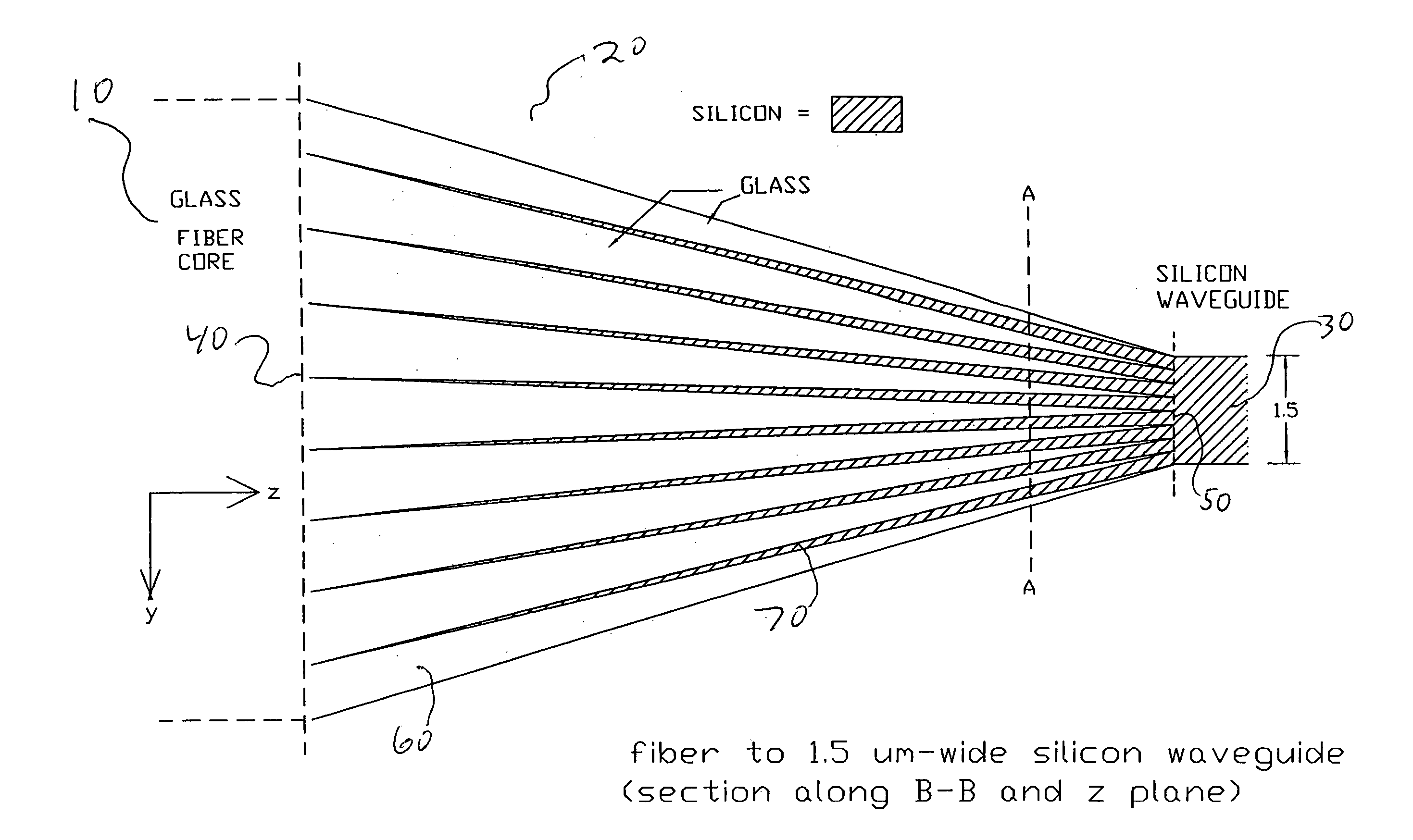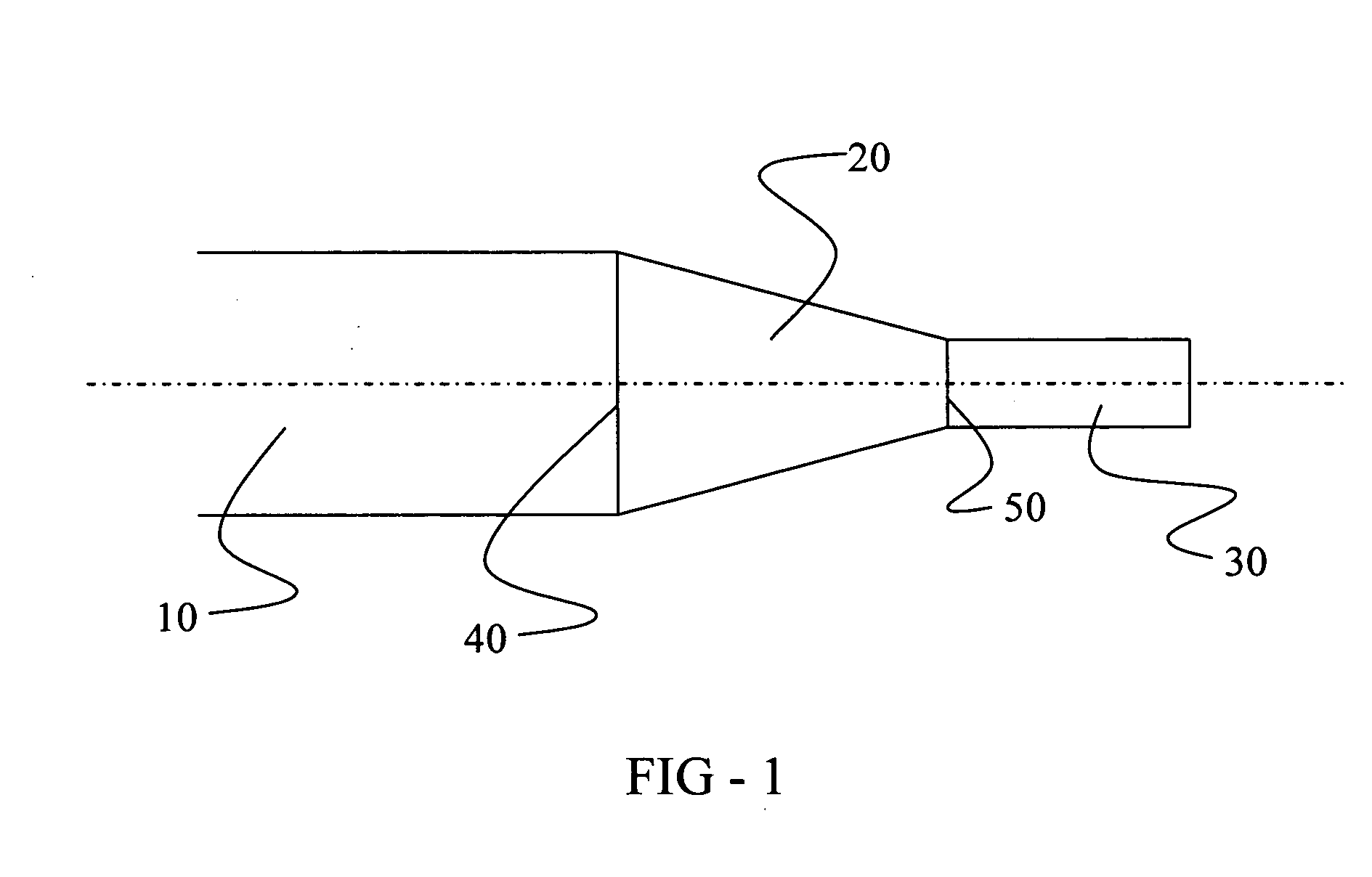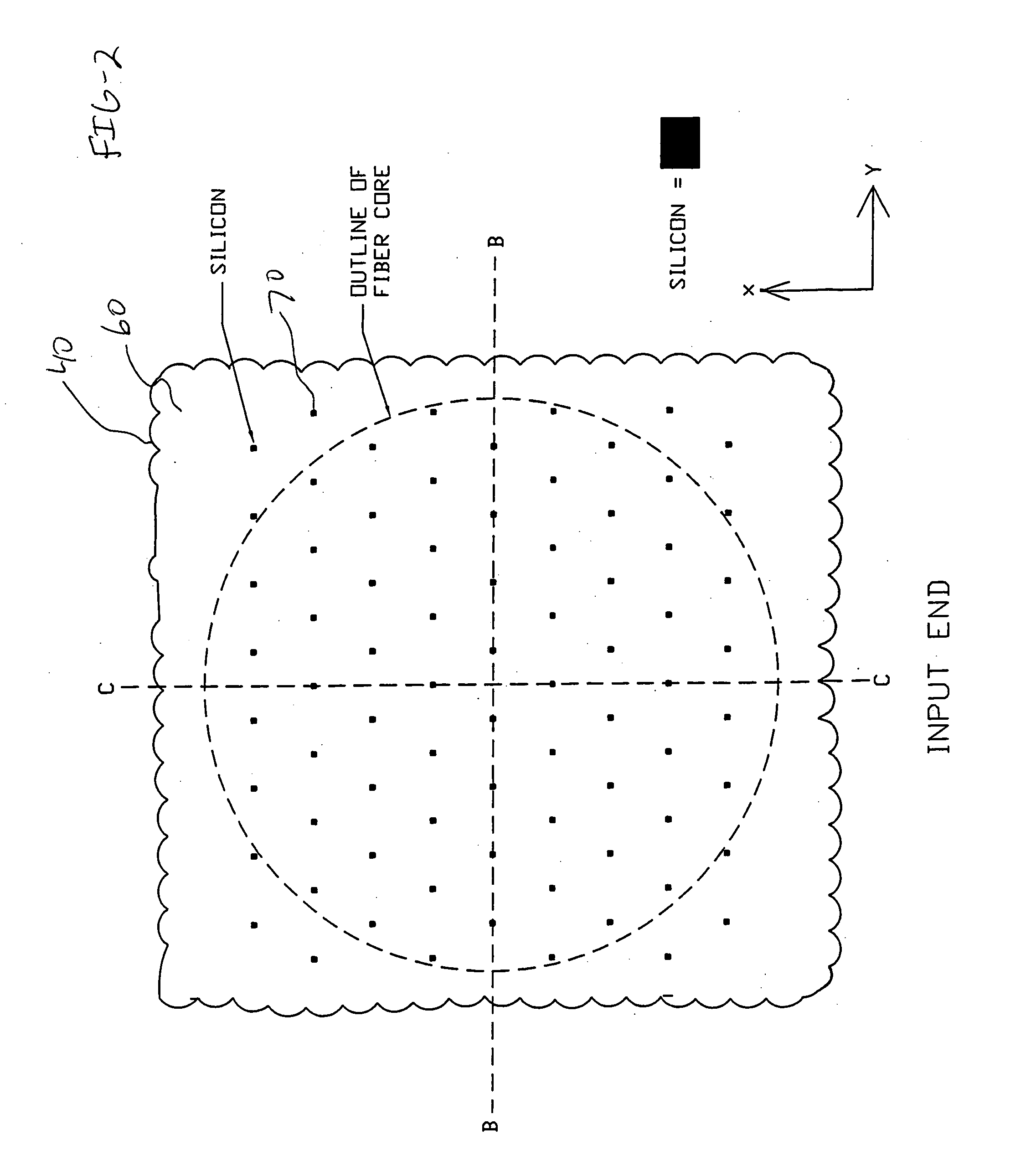Optical coupling device
a coupling device and optical technology, applied in the field of optical coupling devices, can solve the problems of limiting the ability of the communications industry to realize the full potential of optical carrier frequencies, and a key source of loss, so as to achieve efficient transmission of optical modes and efficient transmission of signals.
- Summary
- Abstract
- Description
- Claims
- Application Information
AI Technical Summary
Benefits of technology
Problems solved by technology
Method used
Image
Examples
example 1
[0059] In this example, we consider an embodiment of the instant device that includes two interspersed dielectric materials where the dielectric materials have different permittivities. The device has an input end having an input cross-section and an output end having an output cross-section where the cross-sectional area of the device varies continuously from the input cross-section to the output cross-section along the length of the device. The input and output cross-sections have a cross-sectional area that includes a certain fill factor of one of the dielectric materials and a certain fill factor of the other of the dielectric materials where the fill factors of the two dielectric materials differ in the input and output cross-sections. In a preferred embodiment, the fill factors of the two dielectric materials vary continuously over different cross-sections along a propagation pathway through the device.
[0060] The coupling device in this example interconnects an optical fiber ...
example 2
[0069] In this example, a coupling device for a planar integrated optical element is described. The device of this example provides coupling of an optical fiber having a glass core region with a silicon slab waveguide where the central axis of the fiber is not aligned with the central axis of the waveguide. More specifically, the coupling device of this example permits the efficient transfer of an optical signal from a fiber to a waveguide where the fiber and waveguide have a boundary that lie in a common plane. Such a configuration is desirable, for example, in integrated optical elements in which all-planar structures are used. In these structures, individual elements of an optical circuit are deposited or otherwise placed on a common surface and it is desirable to route optical signals from one device to another.
[0070] The optical fiber and silicon waveguide are as described in Example 1 hereinabove and the coupling element of this example includes two dielectric materials: glas...
example 4
[0083] In the foregoing examples, representative input and output cross-sections are shown and conditions relevant to the efficient transfer of an optical signal from a transmitting device to a receiving device via the instant coupling device are described. In this example, the cross-sectional shape of one or more dielectric materials within the instant coupling device in the direction of propagation of the optical signal is considered.
[0084] The conditions described hereinabove for conserving impedance along the length of the coupling device are based on a compensation of effects resulting from the variation in the cross-sectional geometry of the coupling device through tapering to adjust the physical dimensions in which the optical signal is confined from a size comparable to the transmitting device to a size comparable to the receiving device by a compensating change in effective permittivity through a variation in the fill factor of one or more of the constituent dielectric mat...
PUM
 Login to View More
Login to View More Abstract
Description
Claims
Application Information
 Login to View More
Login to View More - R&D
- Intellectual Property
- Life Sciences
- Materials
- Tech Scout
- Unparalleled Data Quality
- Higher Quality Content
- 60% Fewer Hallucinations
Browse by: Latest US Patents, China's latest patents, Technical Efficacy Thesaurus, Application Domain, Technology Topic, Popular Technical Reports.
© 2025 PatSnap. All rights reserved.Legal|Privacy policy|Modern Slavery Act Transparency Statement|Sitemap|About US| Contact US: help@patsnap.com



